The discovery of this extraordinary building is due to Ercole Contu who, finding himself in front of a mound of earth, was initially convinced of finding a nuraghe. With the excavations he instead discovered the remains of a truncated pyramidal construction preceded by a long ascending ramp that had strong similarities with the terraced altars or Mesopotamian ziggurats.
The name, the subject of various hypotheses over the years, actually means mountain of stones, as stated in an ancient cadastral map which indicates it as "Monte de Code."
This megalithic structure, built dry with large blocks of limestone in the second half of the fourth millennium BC, developed successively in two phases, that of the "red temple" in the final Neolithic (3500-2900 BC) and the subsequent one of the "temple a gradini” in the Eneolithic (about 2700 BC).
Around the site extended a village with quadrangular huts and numerous hypogeal necropolises, the so-called house of janas, arranged around the sanctuary "almost like a fan" (A. Moravetti, 2006).
The oldest part is a quadrangular structure, placed on top of the building and connected by a staircase. The room, which cannot be visited by the public, has plastered walls and floors and red ocher paintings; Red ocher has been used extensively in funerary contexts and house of janas and it seems connected to the discourse of rebirth (M. Gimbutas, 2008; P. Melis, 2017). It is therefore hypothesized a sort of temple-altar in which rites and ceremonies were performed.
The main monuments found on the site:
Two slabs were found next to the ramp. The first is a limestone trapezoidal slab dotted with cup marks and with perforated edges, probably an offering table where animal sacrifices were performed. Below is a natural sinkhole. The second is one polygonal trachyte slab (1,96×1,90 m, average thickness 20 cm) which, like the first, has a smooth surface and cup marks.
Two spherical stones, found not far from the building and subsequently placed next to the ramp, present elements that confirm the cultic uses linked to the female sphere: smooth surfaces and the presence of numerous cup marks. According to Contu (2000) and Moravetti (2006) the largest would be a sacred stone similar to theomphalos of Delphi or perhaps a solar symbol.
Three stelae in limestone/granite: the first presents a design with lozenge and spirals (found in the area of the large ramp), also interpreted as "Goddess of the eyes" (P. Melis 2017); for an in-depth treatment of the "Goddess of the Eyes", see M. Gimbutas, 2008. In the second, rectangular (in granite), a female figure in relief is represented (found north of the pyramid, the original is currently exhibited in the Sanna Museum of Sassari) while the last one is a flat stone engraved with 13 parallel and two perpendicular grooves.
Six menhirs among which, a rough quadrangular shape (4,4 meters high) located next to the ramp, two menhirs that were located next to theomphalos (in the original position), the first of sandstone 1,90 m high. red, the second 2,30 high in white limestone, interpreted as representations respectively of the masculine and feminine or ancestors or mythical ancestors. Like many menhirs, the most accredited interpretation, given the phallic shape, is the symbology linked to fertility (E. Contu, 2000; A. Moravetti, 2006). At least three others were found in the immediate area.
In the area surrounding the sanctuary, dozens of nuraghes, necropolises, menhirs, hypogea have been found, specifically:
1. Nuragheddu by Li Pedriazzi; 2. Hypogeal necropolis Su Crucifissu Mannu; 3. Li Lioni hypogean necropolis; 4. Nuraghe La Camusina; 5. Nuraghe La Luzzana of Chercu; 6. Nuraghe Figga; 7. Nuraghe Cherchi; 8. Roman villa Ponte Giogante; 9. Nuraghe Iron; 10. Monte d'Accoddi hypogean necropolis; 11. Prehistoric settlement Monte d' Accoddi; 12. Menhir Monte d'Accoddi; 13. Hypogea of Marinaru; 14. Underground necropolis of Ponte Secco; 15. Menhir Frades Muros; 16. Dolmen Frades Muros; 17. Su Jaiu hypogeal necropolis; 18. Sant'Ambrogio hypogeal necropolis; 19. Hypogeic necropolis of Spina Santa (E. Contu 2000, 6).
Given the high number of necropolises, most of which are hypogean, (house of janas), Contu (2000) hypothesized that the populations who frequented it over the millennia practiced the cult of the dead; the domus de janas were even used from 4000 BC until the Roman and medieval times (E. Contu 2000, 9). Inside the structures, the presence of both the motif of the "false door” that of bovine protomes “crescent moon”. In tombs II and III, Cycladic-type "tracery" female statuettes were found, as well as pottery belonging to the Ozieri culture.
According to Lo Schiavo (1986) about 5300 finds (fragmented) were found, among which a fragment of a hemispherical bowl decorated with two stylized hourglass figurines in a dancing attitude and some fragmented statuettes, of the Cycladic type, found near the altar . On the crushing of the statuettes, the hypothesis of rites connected to fertility has been advanced, i.e. a sort of sowing of the fragments to fertilize the ground (P. Melis 2017).
Throughout the area around the sanctuary, leftovers of food, marine mollusc species and shells were found, which the site is still littered with. Among the latter, the Charonia, used as a wind instrument (bùccina).
Among the huts of the village, the most interesting is the one called "Sorcerer's Hut”, also called Hut p.s, partially destroyed by fire; located to the east of the altar, has yielded about a hundred vases, a female terracotta statuette and a trapezoidal loom weight decorated with hanging discs. Furthermore, under an overturned jug, some bivalve marine shells, a bovine horn and eight kidney-shaped vertical loom weights were found.
Lilliu (2001) and Magli (2009) have highlighted the astronomical orientation of the structure in relation to the lunar cycles; Magli (2009) also adds the alignment with the solar movements, the planet Sirius and Venus.
In all the texts consulted for this description, the sacred use of the building is confirmed and some hypothesize a temple dedicated to the "Mother Goddess” (P. Melis, 2017; G. Lilliu, 2001) or in any case to cults related to fertility (E. Contu, 2000). Lilliu (2001) speaks of the cult of the Mother Goddess who in this case has transformed into a "Lady of Heaven”, given the specific characteristic of “high place”. It should be noted that comparable structures are not known throughout Europe, including the Mediterranean basin.
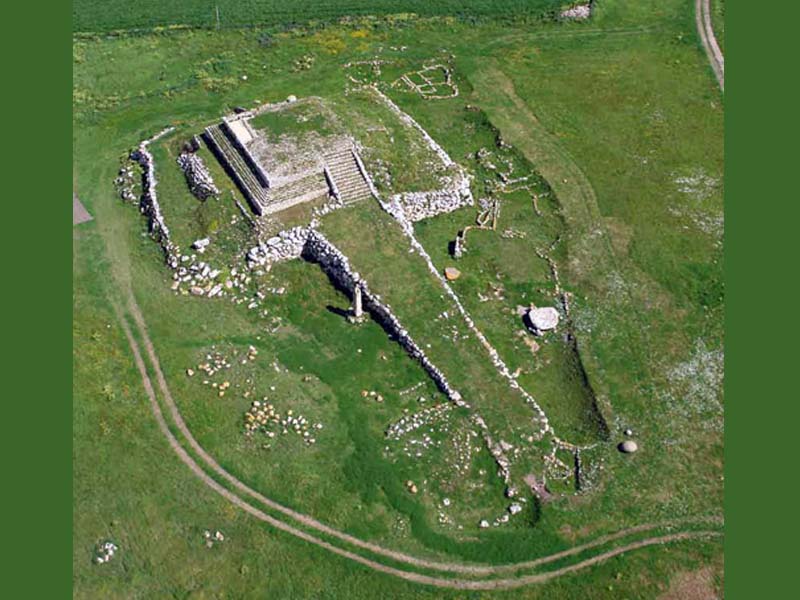
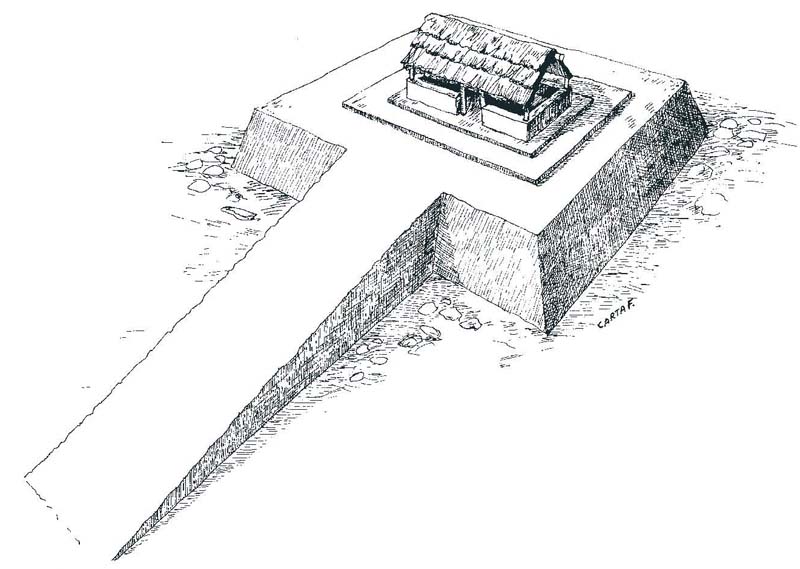
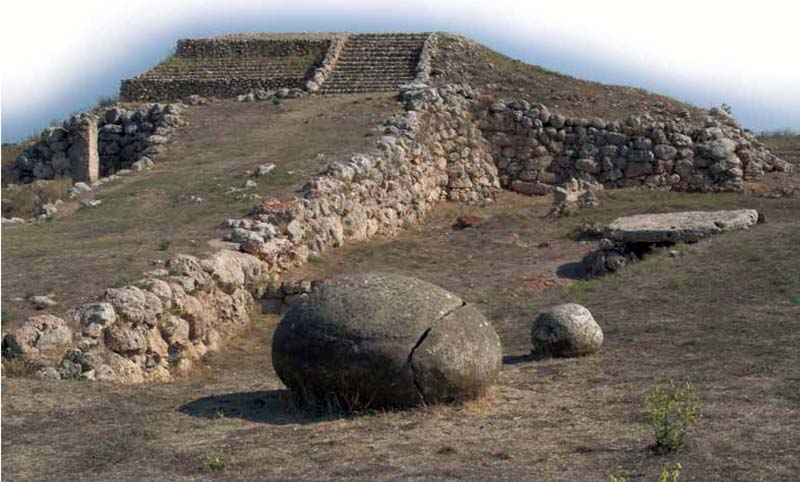
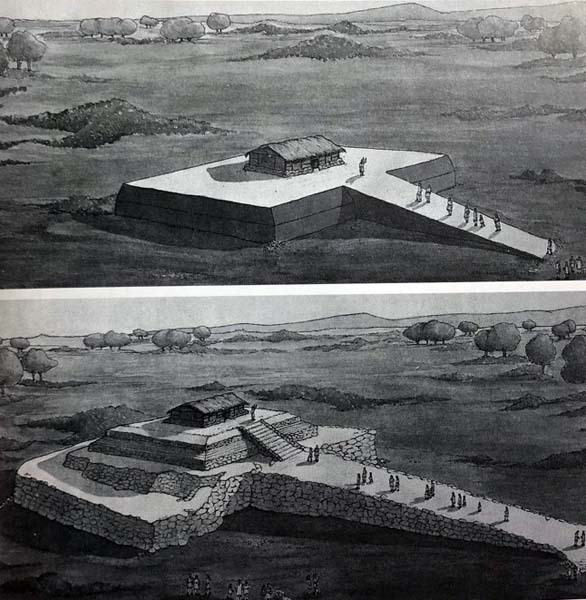
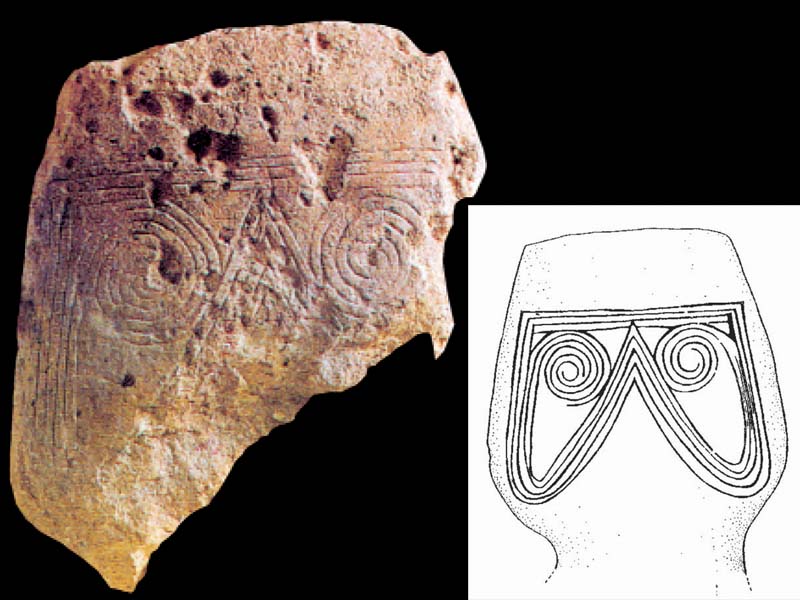
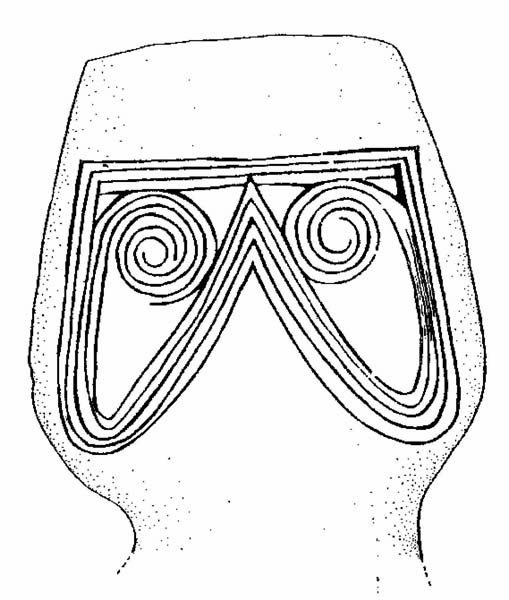
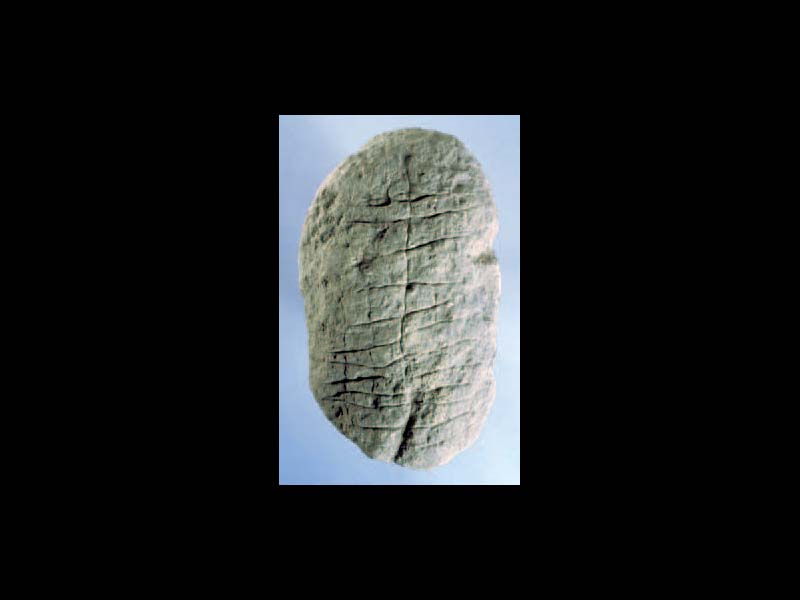
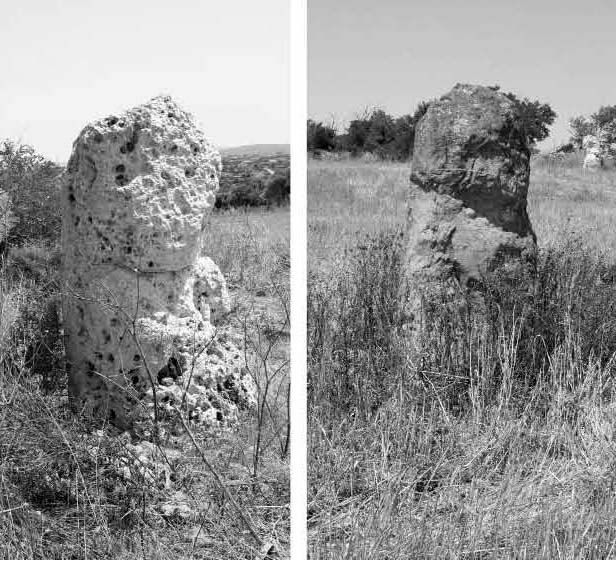
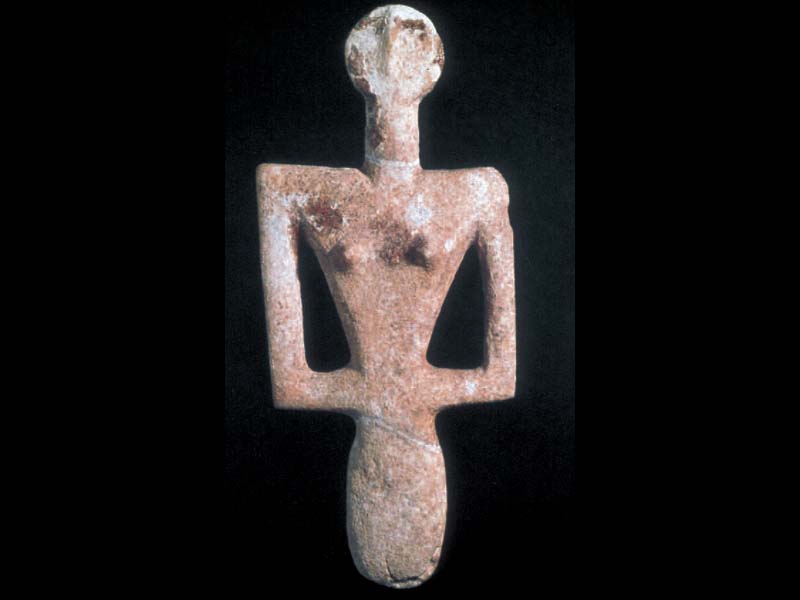
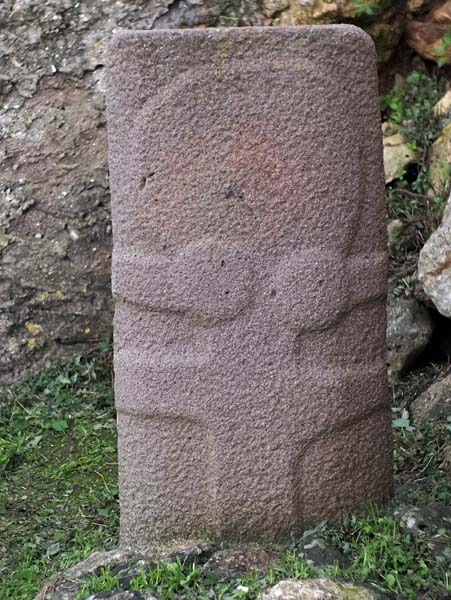
Historical notes
The first excavations, carried out by Ercole Contu, date back to the 50s (from 1952 to 1958); from 1979 to 1989 they were taken over and expanded by Santo Tinè. Unfortunately, the mound that covered the structure was used as an anti-aircraft base during WWII and this heavily damaged the top of the building.
CARD
LATEST PUBLISHED TEXTS
VISIT THE FACTSHEETS BY OBJECT

